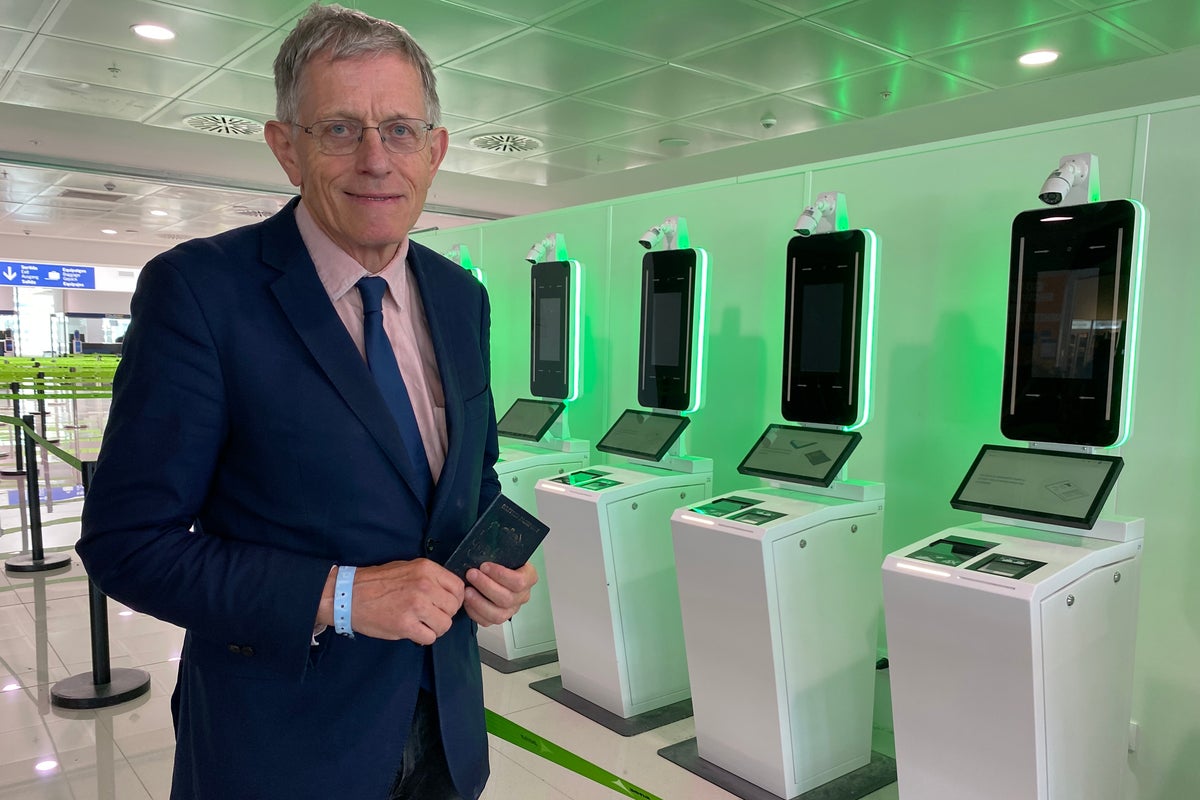Your support helps us to tell the story
From reproductive rights to climate change to Big Tech, The Independent is on the ground when the story is developing. Whether it’s investigating the financials of Elon Musk’s pro-Trump PAC or producing our latest documentary, ‘The A Word’, which shines a light on the American women fighting for reproductive rights, we know how important it is to parse out the facts from the messaging.
At such a critical moment in US history, we need reporters on the ground. Your donation allows us to keep sending journalists to speak to both sides of the story.
The Independent is trusted by Americans across the entire political spectrum. And unlike many other quality news outlets, we choose not to lock Americans out of our reporting and analysis with paywalls. We believe quality journalism should be available to everyone, paid for by those who can afford it.
Your support makes all the difference.Read more
“Make sure, where possible, you’re leaving yourself between three and four hours from the point of entry” – that was the stark warning from travel industry leader Julia Lo Bue-Said, chief executive of Advantage Travel Partnership. She was speaking on the eve of the roll-out of the EU entry-exit system (EES) on Sunday 12 October.
Ms Lo-Bue Said continued: “You may be going for a concert, you may be going for a meeting, you may be going for a wedding, for a cruise.
“If you’re not leaving yourself enough time and you unfortunately arrive at an airport where there is a bottleneck, which in a lot of places there are already, this is going to add another layer of frustration and delay.”
So which are the locations that are likely to be busiest? Are there particular times to avoid, or favour? And conversely, where and when will queues be minimal?
These are the key questions and answers.
What’s the problem?
Space is at a premium at all big airports. Entry-exit system registration kiosks are expensive. Therefore hubs have a strictly limited number of kiosks. And by analysing flying schedules, it is possible to identify crunch points when lots of passengers arrive who need screening.
For example, at Palma de Mallorca in Spain, from 12.20am seven flights carrying over 1,200 passengers from the UK arrive in just half an hour. I count around 60 kiosks at the airport. Make the following assumptions:
- Registration takes two minutes per passenger.
- There are 180 passengers per plane who need registration.
- Flights are broadly on time.
At 12.20am, when no fewer than three flights carrying 540 are due to arrive simultaneously from Birmingham, Bristol and Manchester, it will take 18 minutes for these flights to clear. By this time a plane from Belfast has arrived, adding to the lines – except that some of those passengers will wisely have taken up the option of an Irish passport, allowing them to swerve the whole miserable business.
Behind them, passengers from Newcastle, Glasgow and Gatwick are lining up.
Similar congestion is likely at popular airports with many flights from the UK.
At Faro in Portugal, a similar sequence of seven UK flights in 30 minutes happens on Saturday mornings from 9.50am.
Smaller airports have fewer kiosks, meaning the Saturday evening UK surge at Heraklion in Crete could put stress on the system: seven arrivals in under two hours, augmented by flights from Tel Aviv – many of whose passengers will also need clearing.
When is a good time to land at holiday airports?
The earliest flight to land is likely to be a good bet. First EES-required arrival on a Saturday at Alicante is Ryanair’s 5.45am departure from Liverpool, in at 9.25am.
Anything else to be aware for holiday flights?
Being first off the plane has never been so crucial. Seats at the front of the plane are likely to be fastest, though on airlines such as Ryanair which traditionally use both front and rear steps being at the back can also be an advantage.
If flights are disrupted, be aware that lines could get uncomfortably long. For example, suppose bad weather or a sandstorm closes one of the Canary Islands airports. When flights resume, there are likely to be arrivals every few minutes from the UK.
Where else are the pain points?
The biggest European hubs are Amsterdam, Frankfurt and Paris CDG. Many of the passengers arriving at these airports are Schengen area nationals, and therefore swerve the entry-exit system. But in particular in the early morning, large numbers of flights are scheduled to land from long-haul destinations.
At Paris CDG, the first 15 minutes of the morning wave see no fewer than nine wide-bodied arrivals from Tokyo, Montreal, Santiago, Shanghai, Hong Kong, Abidjan, New York, Beijing and Dubai. Even if only one in three passengers requires the entry-exit system, that is around 1,000 people.
Is there a time and a place especially worth avoiding?
Milan Malpensa in early afternoon. Middle East arrivals from Jeddah, Dubai (an Airbus A380 Superjumbo) and Doha comprise the warm-up act for the Ryanair flight from Manchester. Expect a long, long wait.
Somewhere you are likely to have a minimal wait?
Luxembourg. Efficient airport, smaller aircraft, and many of those on board are Schengen area citizens and do not require the EES check. Possibly worth avoiding at 7pm on Thursday evenings, though, when Europe’s most unusual intercontinental flight – CZ677 from Zhengzhou to Luxembourg – touches down.
And on the way home?
Entry-exit system checks are also required on departure. The Romanian authorities say: “We recommend that third-country nationals subject to EES procedures, especially in the context of air travel, arrive at the airport with extra time before their scheduled international flights.”
